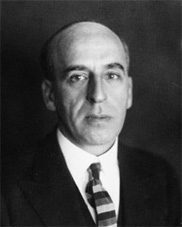Identity Statement for Seán Lester
- Reference code: IE UCDA P203
- Title: Papers of Seán Lester (1888–1959)
- Dates: 1912–58
- Level of description: Fonds
- Extent: 13 boxes
 Born in Carrickfergus, County Antrim in 1888, Lester was educated at Methodist College, Belfast. His early career as a journalist saw him working for a number of titles including the Portadown Express, County Down Spectator, Connacht Tribune, Dublin Evening Mailand Freeman’s Journal. During this time he was actively involved in the independence movement, becoming a member of The Gaelic League, the Dungannon Clubs, and the IRB. In 1923 he joined the newly formed Department of External Affairs as Director of Publicity, a post he held until 1925 when he was made Assistant Secretary in the department.
Born in Carrickfergus, County Antrim in 1888, Lester was educated at Methodist College, Belfast. His early career as a journalist saw him working for a number of titles including the Portadown Express, County Down Spectator, Connacht Tribune, Dublin Evening Mailand Freeman’s Journal. During this time he was actively involved in the independence movement, becoming a member of The Gaelic League, the Dungannon Clubs, and the IRB. In 1923 he joined the newly formed Department of External Affairs as Director of Publicity, a post he held until 1925 when he was made Assistant Secretary in the department.
In 1929, he was sent to Geneva as Permanent Delegate of the Irish Free State to the League of Nations, succeeding Michael MacWhite who was being transferred to Washington. In 1933, he was seconded from the Irish service to the post of High Commissioner of the League of Nations to the Free City of Danzig where he showed great courage in protesting against Nazi persecution of the Jewish population.
Appointed Deputy Secretary-General in 1937, Lester became Acting Secretary-General in 1940 when the French Secretary-General, J. Avenol, left Geneva for Vichy. Increasingly isolated, Lester remained in Geneva to maintain the basic functioning of the League during the war. In 1946, Lester was retrospectively appointed Secretary-General of the League, backdated to 1940. He stayed on in Geneva until 1947 when the task of winding up the League came to an end and functions and offices were transferred to the United Nations Organisation.
He retired to the west of Ireland where he indulged his passion for fishing, and resisted all calls for a return to service. He received honorary degrees from the National University of Ireland and Dublin university, and also received the Woodrow Wilson award for his service to the League of Nations during the war. He died at Galway in 1959. He had married Elizabeth (Elsie) Tryell in 1920 and had three daughters.
This collection was depsoited in UCD Archives in February 2005 by his daughters Dorothy Gageby, Ann Gorski and Patricia Kilroy.
Early Career (1914-25): memoranda, reports and correspondence concerning his journalism; reports, bulletins, correspondence and memoranda particularly concerning the North-Eastern Boundary Bureau while Director of Publicity, Department of External Affairs.
League of Nations (1929-47): annual files containing correspondence, reports and excerpts from private diaries, dealing with his time as Permanent Delegate of the Irish Free State to the League of Nations, High Commissioner of the League of Nations to the Free City of Danzig, Deputy Secretary-General and later Acting Secretary-General of the League of Nations; official Council minutes; Secretariat correspondence; and League of Nations official publications.
Transcripts of speeches and broadcasts delivered throughout his career (1933-53)
Retirement (1948-58): personal correspondence
Press cuttings and publications (1912-59)
Maps, plans and drawings (1935-45): large scale maps of the Free City of Danzig, battle fronts and positions during World War II; architectural plans and drawings of the League of Nations buildings.
Photographs (1929-46): League of Nations Council meetings and conferences; final sessions of the League of Nations in 1946-7; architectural views of the interior and the exterior of the League of Nations buildings.
Further Lester papers have been deposited in the United Nations Office at Geneva (UNOG).